The Transformative Role of White Graphite Pencils in Educational Art Programs
The Transformative Role of White Graphite Pencils in Educational Art Programs
Table of Contents
1. Introduction to White Graphite Pencils
2. Understanding the Composition and Characteristics of White Graphite
3. The Versatility of White Graphite Pencils in Art Education
3.1. Unique Properties of White Graphite Pencils
3.2. Comparison with Traditional Graphite Pencils
4. Enhancing Creativity with W
The Transformative Role of White Graphite Pencils in Educational Art Programs
Table of Contents
1. Introduction to White Graphite Pencils
2. Understanding the Composition and Characteristics of White Graphite
3. The Versatility of White Graphite Pencils in Art Education
3.1. Unique Properties of White Graphite Pencils
3.2. Comparison with Traditional Graphite Pencils
4. Enhancing Creativity with White Graphite Pencils
4.1. Techniques for Utilizing White Graphite in Art
4.2. Integrating White Graphite Pencils in Curriculum
5. The Psychological Impact of Using White Graphite Pencils in Education
6. Success Stories: Case Studies in Art Programs
7. Frequently Asked Questions (FAQs)
8. Conclusion: Embracing White Graphite Pencils in Art Education
1. Introduction to White Graphite Pencils
White graphite pencils are gaining recognition in educational art programs for their unique ability to blend creativity with technique. Unlike traditional graphite pencils, white graphite pencils provide artists with a medium that allows for both subtle shading and bold highlights. This article will explore the multifaceted role of white graphite pencils in educational art environments, emphasizing their beneficial impact on curriculum and student engagement.
2. Understanding the Composition and Characteristics of White Graphite
White graphite pencils, also known as china markers or wax-based pencils, are made from a combination of natural graphite and a white clay binder. This composition gives them a distinct feel and performance compared to standard graphite pencils.
The **key characteristics** of white graphite include:
- **Opacity:** White graphite produces an opaque mark that can easily contrast with darker backgrounds, making it ideal for mixed media applications.
- **Blendability:** The waxy texture allows for smooth blending, making it easier for students to create gradients and soft transitions in their work.
- **Durability:** White graphite pencils are generally more resistant to breakage, allowing for longer use during classes and workshops.
3. The Versatility of White Graphite Pencils in Art Education
White graphite pencils serve as a versatile tool for students of all ages, enabling a range of creative possibilities.
3.1 Unique Properties of White Graphite Pencils
The unique properties of white graphite allow students to explore different artistic styles. They can be used on various surfaces, including colored paper, canvas, and even wood. This versatility opens up new avenues for creativity and experimentation in the classroom.
3.2 Comparison with Traditional Graphite Pencils
While traditional graphite pencils are commonly used for detailed sketches and shading, white graphite pencils excel in areas where adding contrast is essential. For example, they can create striking highlights on darker paper or add dimension to colored drawings. This capability encourages students to think outside the box and develop their artistic voice.
4. Enhancing Creativity with White Graphite Pencils
White graphite pencils empower students to enhance their creativity and express their ideas effectively.
4.1 Techniques for Utilizing White Graphite in Art
Some effective techniques for using white graphite pencils include:
- **Overlaying Techniques:** Students can layer white graphite over colored pencils to achieve stunning effects.
- **Shading and Blending:** The pencils can be blended with fingers or blending tools to create soft transitions and textures.
- **Mixed Media Projects:** Incorporating white graphite with other media like watercolor can lead to innovative artwork that showcases diverse methods.
4.2 Integrating White Graphite Pencils in Curriculum
Art educators can integrate white graphite pencils into their lesson plans in various ways. For instance, projects that focus on contrast and layering can effectively demonstrate the pencil’s unique capabilities. Workshops centered around mixed media could also incorporate white graphite to challenge students to push their creativity to new heights.
5. The Psychological Impact of Using White Graphite Pencils in Education
The use of white graphite pencils goes beyond technical skills; it also has psychological benefits for students. Engaging with art has been shown to foster confidence, enhance cognitive skills, and improve emotional well-being.
By incorporating white graphite pencils into educational art programs, students may experience:
- **Increased Motivation:** The novelty of working with a unique medium can inspire enthusiasm toward artistic endeavors.
- **Enhanced Self-Expression:** The ability to experiment with highlights and shadows encourages students to articulate their ideas through art more freely.
- **Improved Collaboration:** Group projects utilizing white graphite can foster teamwork and collective creativity.
6. Success Stories: Case Studies in Art Programs
Numerous art programs have successfully integrated white graphite pencils into their curricula, yielding impressive results.
For example, a local community center's art program noted a significant increase in student participation after introducing white graphite pencils in their mixed media workshops. Students reported feeling more excited about their projects and often sought out creative ways to incorporate the medium into their artwork.
Similarly, a high school art class implemented a unit focusing on the contrasts of light and shadow using white graphite. The students not only improved their technical skills but also gained a deeper understanding of artistic concepts, reflected in their final projects.
7. Frequently Asked Questions (FAQs)
1. What are the benefits of using white graphite pencils in art education?
White graphite pencils allow for enhanced contrast, blending capabilities, and versatility in artistic techniques, making them an excellent tool for creative exploration.
2. How do white graphite pencils differ from colored pencils?
Unlike colored pencils, white graphite pencils primarily provide highlights and shading effects, enabling students to create depth and dimension in their artwork.
3. Can white graphite pencils be used on any type of paper?
Yes, white graphite pencils can be used on various surfaces, including colored paper, textured canvas, and even wood, making them versatile for different artistic projects.
4. Are there specific techniques for blending white graphite pencil effectively?
Techniques such as finger blending, using blending stumps, or layering with colored pencils can enhance the smoothness and transition of white graphite.
5. How can educators incorporate white graphite pencils into their lesson plans?
Educators can integrate white graphite pencils by designing projects focusing on contrast, layering techniques, or mixed media applications that encourage experimentation and creativity.
8. Conclusion: Embracing White Graphite Pencils in Art Education
Incorporating white graphite pencils into educational art programs represents a significant step towards enriching students' artistic experiences. By leveraging their unique properties, educators can foster creativity, enhance skill development, and promote self-expression among students. As art education evolves, embracing innovative tools like white graphite pencils will undoubtedly inspire the next generation of artists to explore their creativity in unprecedented ways. The transformative potential of these pencils is not just in their ability to create art, but in the profound impact they have on the educational journey of every aspiring artist.
Previous:
Contact Us
Office: 1403, Block B, Baolong Center Office Building, Jiaozhou City, Qingdao, Shandong Province, China
Factory: Jln.Raya Sudamanik, 118 Jagabaya Village, Panjiang-Bogor County, Indonesia 16360.
WhatsApp: +86 166 7853 5913
Email:ouyajiahua@gmail.com



















